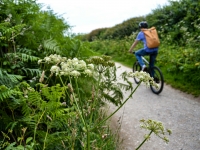New hedgerow regulations were introduced as part of the government’s commitment to environmental sustainability, which will become law in 2024. These regulations will establish a standardised approach to hedgerow management across England, affecting farmers and land managers who work with agricultural land.
The key aspects of the regulations include a mandatory two-meter buffer strip from the centre of hedgerows. The strip must be maintained with green cover, no cultivation or pesticide, and no fertilizer application is allowed within this zone. Additionally, there is a ban on hedge cutting from March 1st to August 31st, to protect nesting birds during their breeding season. However, there are exemptions available for farmers who need to cut or trim hedges in August for specific agricultural purposes, such as sowing oil seed rape.
These regulations mirror previous cross-compliance rules, making it easier for farmers familiar with these past requirements to adapt. The Rural Payments Agency (RPA) will provide guidance on compliance and be the sole enforcer of these regulations, adopting an advice-led approach initially, with stricter enforcement reserved for serious or repeated violations. The regulations will introduce civil and criminal sanctions, allowing the RPA to act against land managers causing repeated serious damage. Although cross-compliance has ended, Defra is encouraging land managers to continue to manage hedgerows within the guidance until the regulations are live.
This regulatory framework aligns with the broader goals of the Sustainable Farming Incentive (SFI), which encourages farmers to participate in environmentally friendly practices. Over 90,000 kilometres of hedgerows are already managed under the agreements linked to the SFI and Countryside Stewardship programs, highlighting the importance of hedgerows in the promotion of biodiversity, pollination, and the reduction of soil erosion.
The new regulations aim to balance environmental protection with agricultural productivity, ensuring that hedgerows continue to play a vital role in the rural landscape while supporting the goals of suitable farming.
